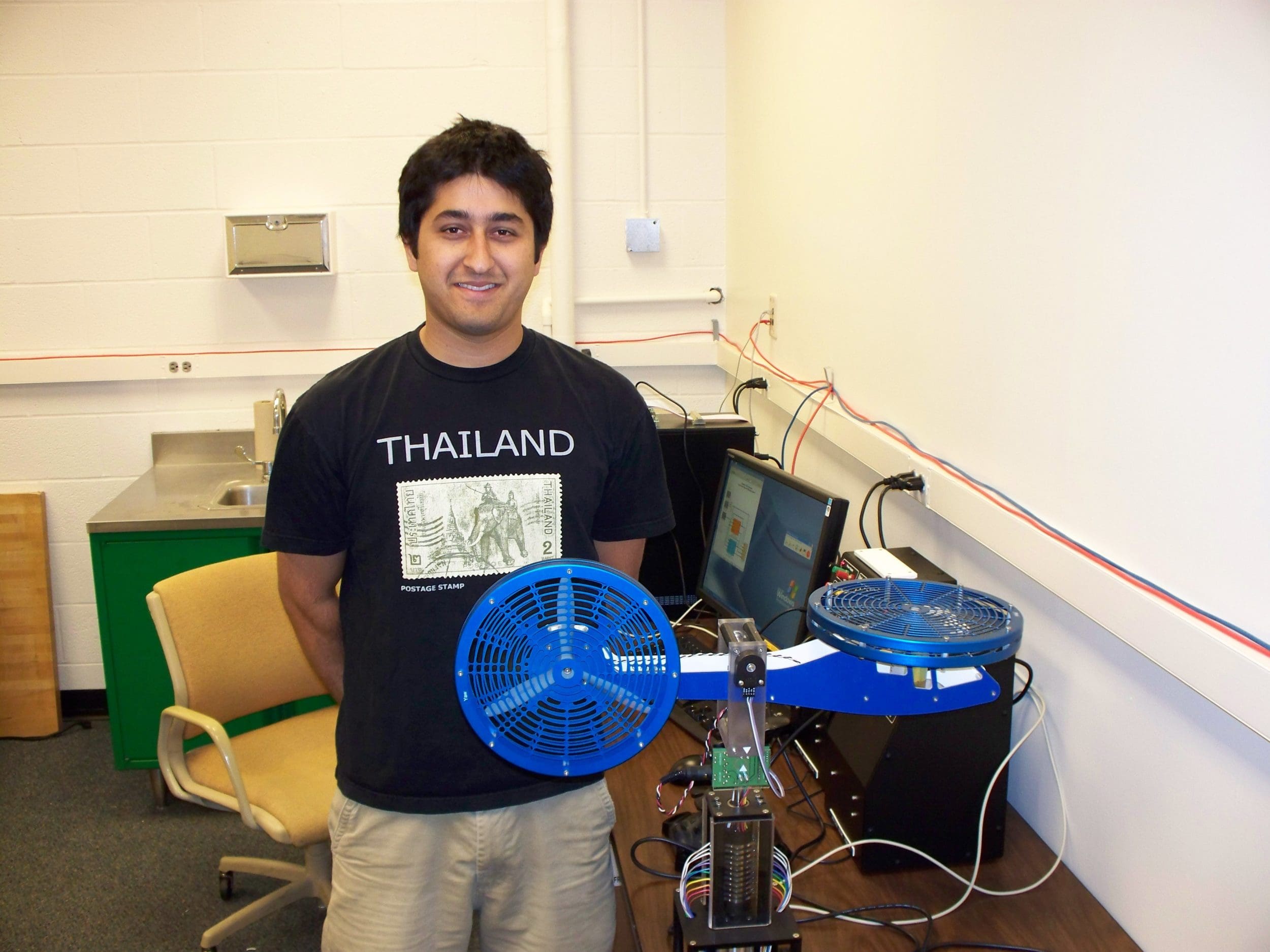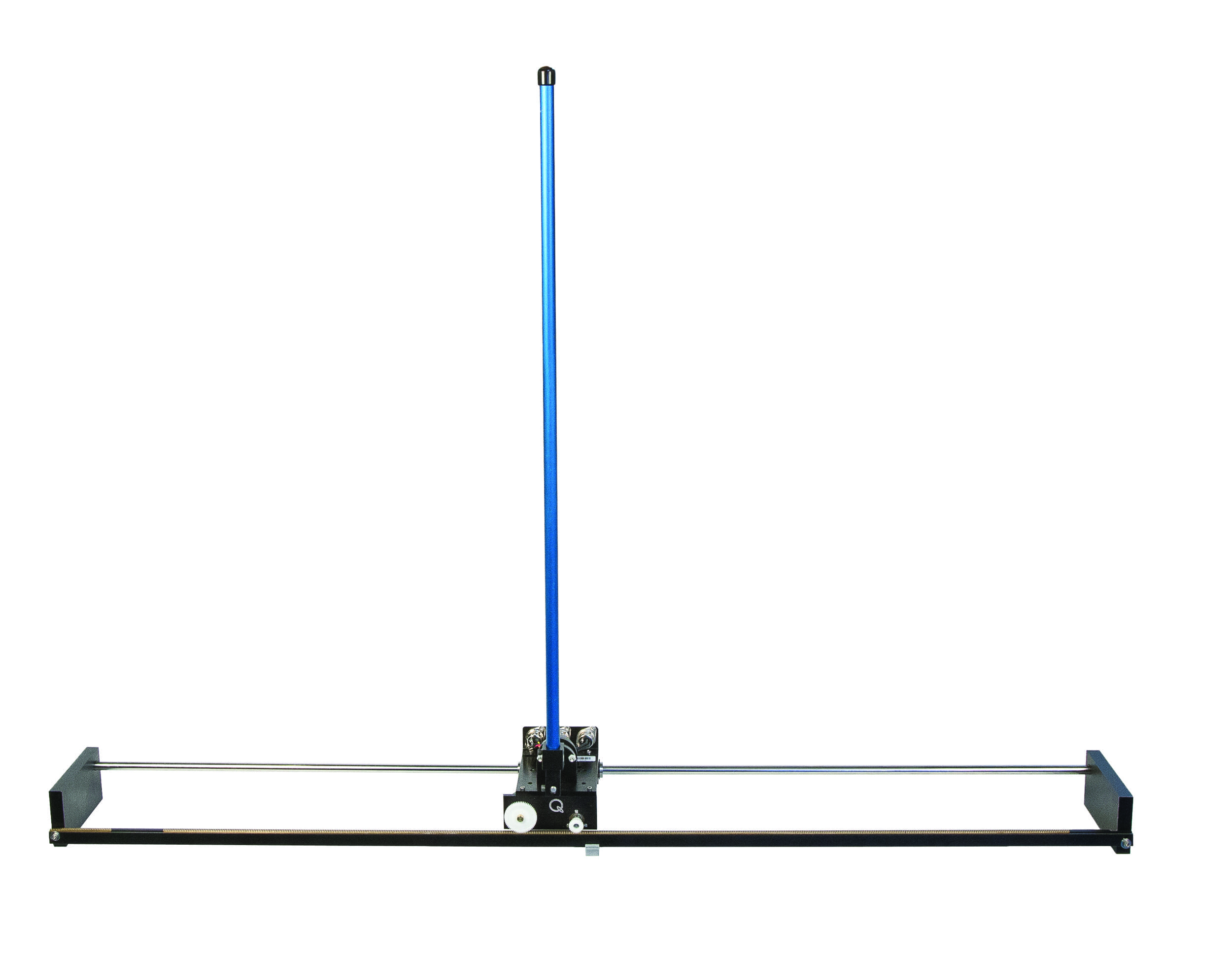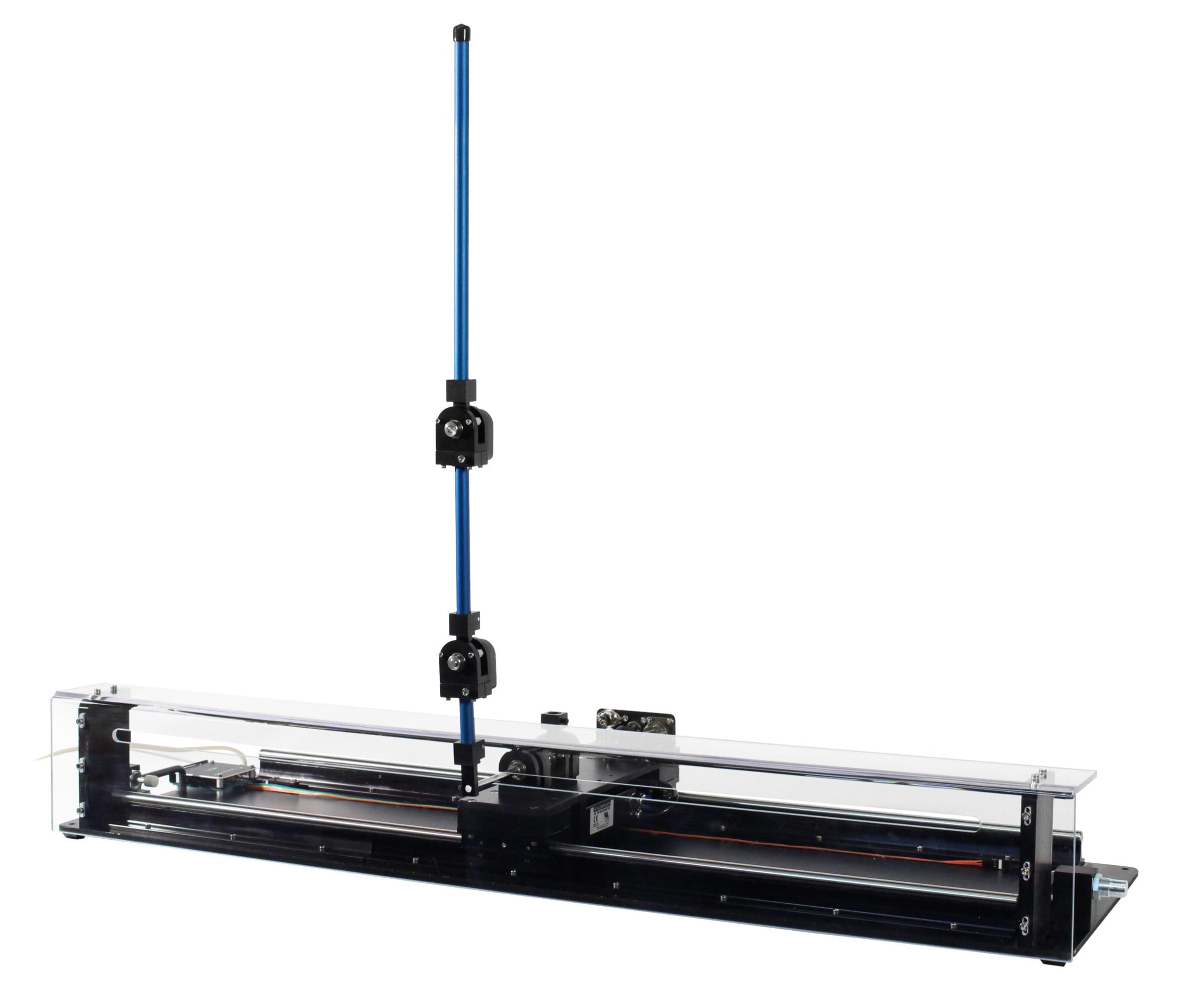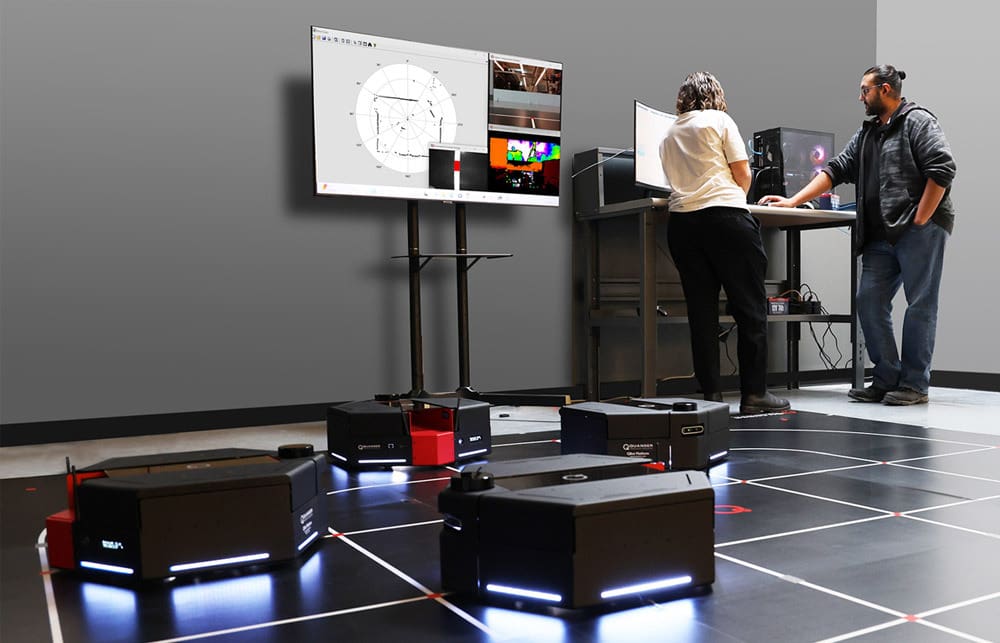Linear Flexible Joint
Teach the fundamentals of dynamics and control
The Linear Flexible Joint is a passive linear cart that connects to the Linear Servo Base Unit through a linear spring. As an implementation of the classical mass-damper-spring quadratic system, the linear flexible joint is an ideal textbook-type experiment. The experiment is useful in the study of vibration analysis and resonance.

Product Details
The Linear Flexible Joint experiment will help your students learn how to model and control real-world dynamic systems such as flexible couplings and gearboxes.
| Linear Flexible Joint cart (LFJC) mass | 0.22 kg |
| LFJC weight mass | 0.125 kg |
| LFJC dimensions (L x D x H) | 10 cm x 14 cm x 12 cm |
| Equivalent spring stiffness | 142 N/m |
| Spring assembly mass | 0.145 kg |
| Spring length | 29.0 cm |
| LFJC encoder resolution (in quadrature) | 4096 counts/rev |
Modeling Topics
- Derivation of dynamic model using Lagrange
- State-space representation
- Parameter estimation
- Model validation
Control Topics
- Linear-quadratic regulator (LQR)
- Vibration control
The following additional components are required to complete your workstation, and are sold separately:
For Simulink
- QUARC® add-on for MATLAB®/Simulink®
- Linear Servo Base Unit
- Quanser VoltPAQ-X1 linear voltage amplifier
- One of the following DAQ devices:
- Quanser Q2-USB
- Quanser Q8-USB
- Quanser QPIDe
For LabVIEW
- Quanser Rapid Control Prototyping (Q-RCP) Toolkit® add-on for NI LabVIEW™
- Linear Servo Base Unit
- Quanser VoltPAQ-X1 linear voltage amplifier
- One of the following DAQ devices:
- NI CompactRIO with Quanser Q1-cRIO
- NI myRIO with Quanser Terminal Board
- Quanser Q2-USB
- Quanser Q8-USB
- Quanser QPIDe






